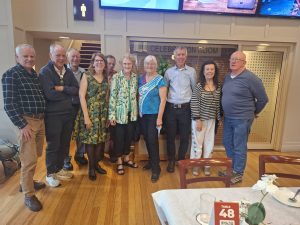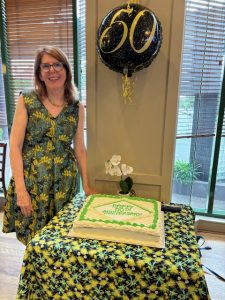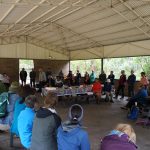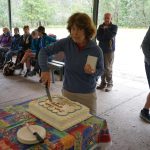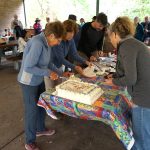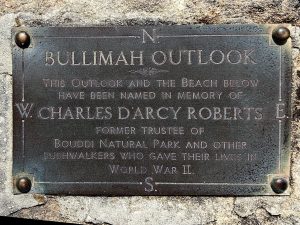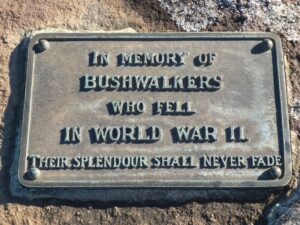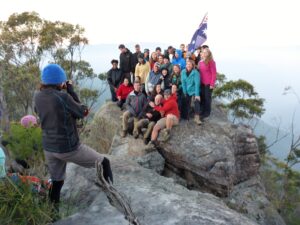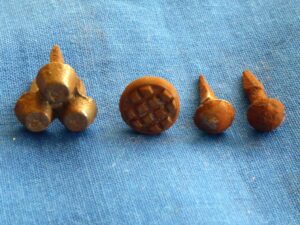Writing the book “Splendour Rock – A Bushwalkers War Memorial” with Michael Keats OAM was a great COVID project. ANZAC Day is not far off again. On ANZAC Day in 1948 Bushwalking NSW in a simple ceremony lead by Paddy Pallin dedicated the memorial that had been installed in February of that year. Thirteen men were recognized as being killed on active service but what about the women. Our book describes the fallen men in detail.
WWI was mostly a male affair. Women were present in small numbers mostly only as nursing staff. Plenty of socks were knitted and ANZAC biscuits baked. You even had the silliness of white feathers being anonymously sent to repatriated soldiers no longer fit for duty. Early 20th Australian history is fascinating. In WWII women were not invisible.
 One list I have never seen is the names of those present on ANZAC Day 1948. Another list I could not find but that I could re-establish was the bushwalkers who served in WWII. Our book has a list of 191 bushwalkers, young men and women from Bushwalking NSW Clubs who served in uniform from the recognized armed services to the merchant marine and “Australian Women’s Land Army” (AWLA). One club, the Rucksack Club with almost equal numbers of both genders was noticeable for having more women than men in uniform.
One list I have never seen is the names of those present on ANZAC Day 1948. Another list I could not find but that I could re-establish was the bushwalkers who served in WWII. Our book has a list of 191 bushwalkers, young men and women from Bushwalking NSW Clubs who served in uniform from the recognized armed services to the merchant marine and “Australian Women’s Land Army” (AWLA). One club, the Rucksack Club with almost equal numbers of both genders was noticeable for having more women than men in uniform.
During WWII the Manpower Directorate aimed to control all working age Australians in their occupations (the “draft” in another name). Eventually nearly 1 million of a population of just 7 million were in uniform. Many women were keen to serve and several voluntary organisations were formed as well as auxiliaries to the army, navy and air force. So, not quite full members but still serving in important roles.
Despite the Japanese threat it was not all plain sailing. There still were older men who resisted change. Women also went into factories. It was a different time. When I first joined the work force there were still tradesmen from WWII who rejoiced in stories of women blushing when asking for a “mill bastard” metal file!
Well after WWII the RSL resisted women from the AWLA marching on ANZAC Day. They did reneg and allowed them to march at the end of the parade. Despite this my Aunty Merle had a fabulous time in the AWLA as farm labour and kept in touch with her friends from WWII. Merle would take my two brothers and I to AWLA reunions as relief (I guess) for her sister. (We were young and just found the events boring). When Merle died in 1992, I was asked to be a pall bearer. Four women I did not know turned up in green blazers. As we carried Merle’s coffin out of the church, they were there as a “Guard of Honour” for their mate.
In 1994 Australia did recognize the women of the AWLA which was among the civilian groups to be recognized for their service in WWII. Merle never married so I applied for her medal. It was slow to arrive but was well presented so after showing it to our children and taking pictures of it I posted it to my cousin who had looked after Merle in her later years.
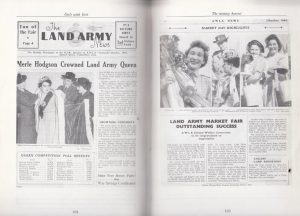 Australian women did play an important role in WWII. We may never fully know how many women were involved as code breakers. They were told to keep it a secret, and that it what they did well past 1945!
Australian women did play an important role in WWII. We may never fully know how many women were involved as code breakers. They were told to keep it a secret, and that it what they did well past 1945!
There are three great books I would recommend regarding Australian women in WWII and the authorities they served with –
Scott, Jean. Girls with Grit 1986. Allen & Unwin – ISBN 994 04 ‘2’ 088042. A history of the AWLA that includes my Aunty Merle as “The Land Army Queen”.
Adam Smith, Patsy. Australian Women at War 2014. The Five Mile Press – ISBN 9781760062637. The “Abbreviations” shown on p. 379 lists all Enlisted Services for Women and Men plus Decorations etc.
Duffy, David F. Radio Girl: the story of the remarkable Mrs Mac, pioneering engineer and wartime legend 2020. Allen & Unwin – ISBN 9781760876654. An excellent read that mentions many voluntary women’s groups in WWII and the fight to be accepted.
Maxwell, Keith & Keats, Michael OAM. Splendour Rock – A Bushwalker’s War Memorial 2023. Design Portfolio – ISBN 978-0-6487913-2-4. This great reference is available where you find all good bushwalking books in the Blue Mountains or via the Bush Explorers website at https://bushexplorers.com.au/catalog
Keith Maxwell.
Honorary Historian BNSW.

